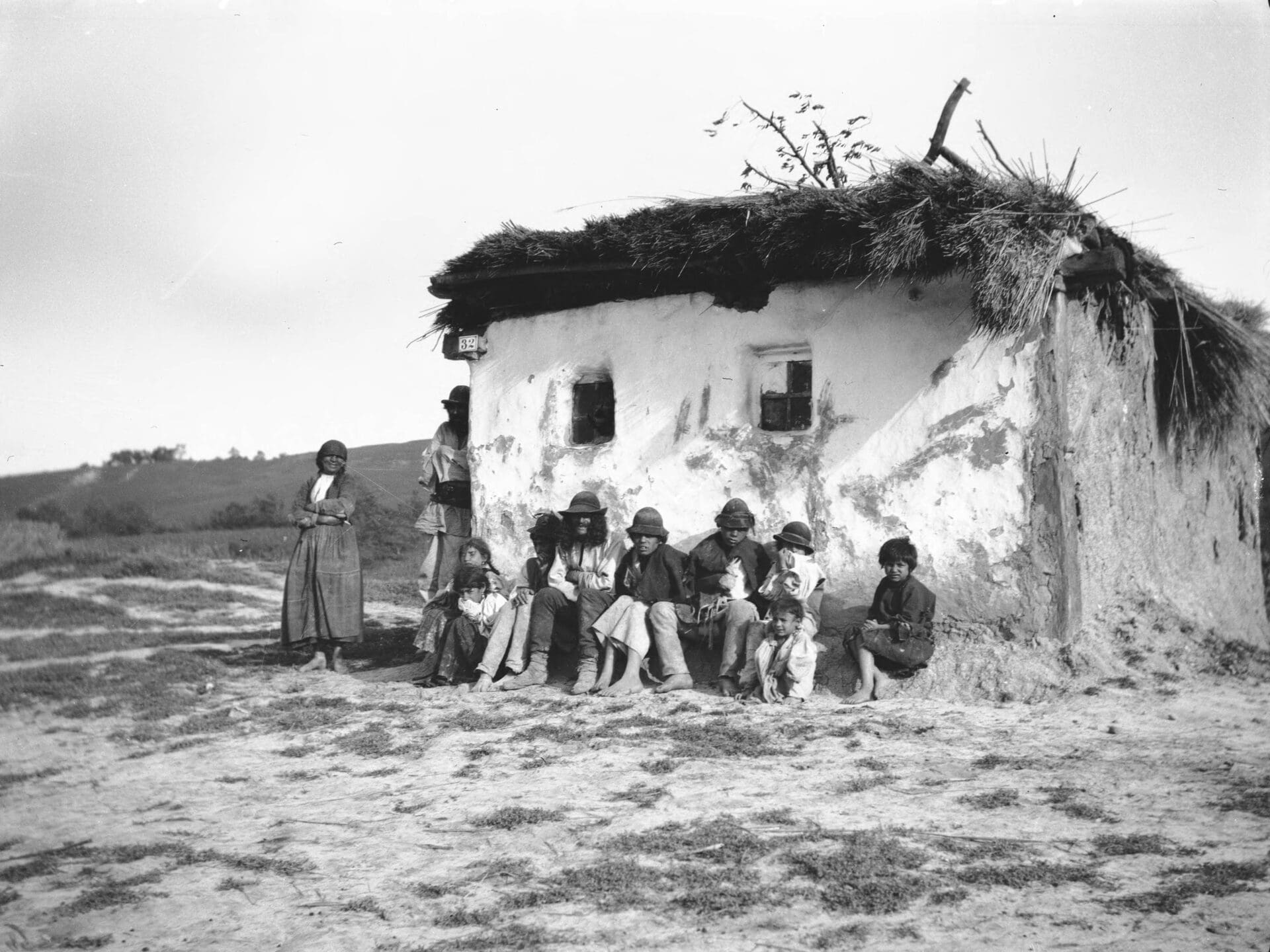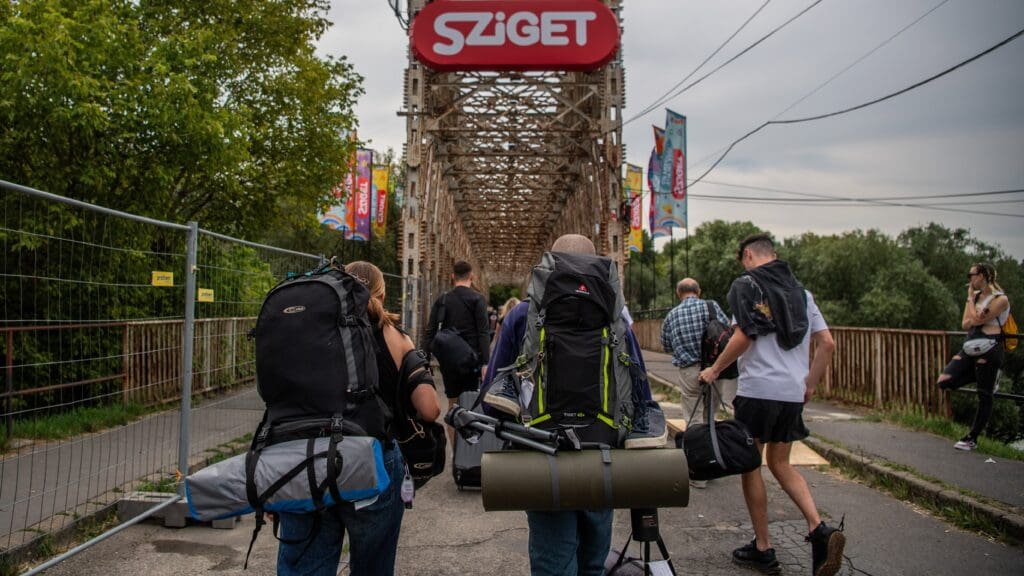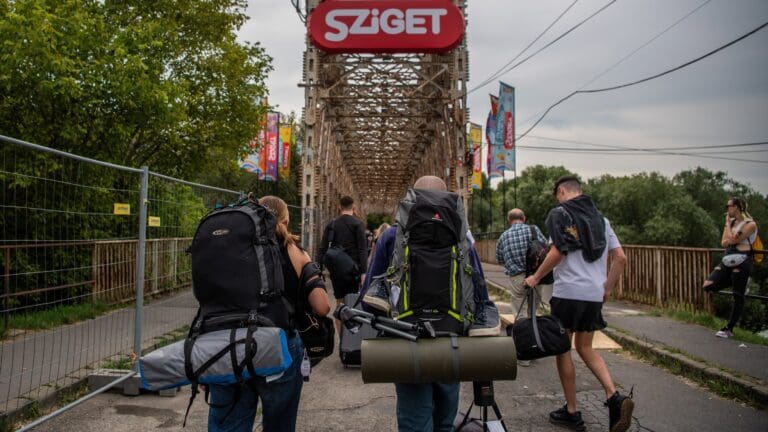Although the years of transition from the end of the Second World War to the emergence of the Rákosi regime are primarily known for being anti-church and the persecution of the traditional leading social classes, anti-Gypsyism was not negligible in the left-wing press of the time. It is unnecessary to indicate which papers of the era were ’left-wing’ since at that time there was only a left-wing press, so we are only distinguishing between the different branches of the progression. Here, we focus primarily on the cryptocommunist (secretly communist) and communist press, sometimes quoting non-communist social democratic and smallholder authors as well.
In the articles of the years of transition, it was a basic guideline that the Roma are the people who avoid work and have a criminal tendency; who must be forcefully integrated into the system of the new, “democratic”, socialist Hungary. While the former assessment was not very different from the press of the Horthy-era, the racist language of the latter effort was in clear contrast to the socialist values that were otherwise so openly professed. Roma were frequent characters in crime articles, usually mentioning in the title that the perpetrator—or alleged perpetrator—was a ’Gypsy’. This term appeared not only as an adjective, but also as a noun, as something that no longer requires further explanation, clarification, or epithet. The word ’Gypsy’ thus automatically functioned as a term with a negative charge, somewhat like ’communist’ or ’Jew’ in the previous system.
Starting with the smaller papers, the Makói Népújság (People’s Paper of Makó) wrote about ’Gypsy bandits’, ’vile’, ’murdering Gypsies’, and a ’murderous Gypsy gang’ in connection with a murder in the fall of 1947.[i] The Dunántúli Népszava (The People’s Voice of Transdanubia), whose editor, József Vedres was a crypto-communist Social Democrat, published an article entitled ’Gypsy Invasion in the Court’ in the summer of 1948 about the many Roma defendants in the criminal court.[ii] The Szegedi Népszava (People’s Voice of Szeged) called a Roma accused of murder a ’beast’ – here the language of dehumanization appeared clearly.[iii] The Somogyi Hírlap (Newspaper of Somogy) published news about the internment of certain lowlife elements under the headline ’Gypsies are being deported’, and the same paper wrote a few weeks later of ’robber-murderer Gypsies’.[iv]
The bigger papers did not put it any better either. The smallholder Igazság (Truth), which was edited by József Dancs, who later found his place in the Kádár system as well, published a lengthy article in October 1948 entitled ’Many complaints about the gypsies’. ’The problem is that […] gypsies have flooded not only the cities, but also the villages. At the Budapest police station, we see Gypsy women every day who are arrested for theft, playing cards, fortune-telling and fraud,’ the article concluded. ’Most lazy gypsy women steal and predict,’ but there are also ’complaints’ where the Roma have settled. ’These parasites still threaten public safety today. […] The gypsy bargainers and petty traders who do nothing but deceive the village farmers have still not disappeared from the weekly markets.’[v]
The convicted murderer Sándor Vékás was referred to as a ‘murdering gypsy boy’ by Szabadság (Freedom),[vi] whose editor-in-chief was Sándor Haraszti, a veteran communist and later deputy head of the Agitation and Propaganda Department of the Central Committee of the Hungarian Workers’ Party (and even later a reform communist member of Imre Nagy’s circle). However, the communist affiliation did not keep the paper away from anti-Roma rhetoric. In fact, the paper published an article under the title ‘The murdering gypsies were captured’ in connection with a murder in Pécs,[vii] but elsewhere—in connection with a Transdanubian gang—it considered it important to clarify that ‘there are several gypsies among the members of the gang’.[viii]Nothing had to be proven about the Roma, the mere suspicion was enough to justify action against them. ‘The fleeing gypsy was shot dead,’ Szabadság reported on the shooting of Gyula Orbán by the police in March 1946. ‘The gypsy’ emerged from a so-called ‘gypsy hut’.[ix] Two years later, the paper also formulated a thinly veiled threat from the pen of László Palásti: ‘In the people’s democracy, the Gypsy is also a person – if he lives humanely and works decently’. The subtitle of the article was: ‘The people’s democracy grants all rights to the working Gypsies’. The emphasis here was also on the word ‘working’.[x]
Texts presented the accused as criminals even without a verdict
To avoid misunderstanding: the problem here is not that newspapers reported crimes that were potentially committed by perpetrators of Roma origin. The problem was texts presenting the accused as criminals even without a verdict, as well as the clearly racist language and dehumanization used even in cases closed with a verdict. The practice was so widespread that the poet György Faludy published a short article in Népszava under his well-known pen name (f. gy.) in January 1948: ‘In the daily press, you can read more and more often about gypsy robbers and gypsy thieves. I don’t know if it’s just my ears that are offended by such a definition?’ As Faludy indicated, ‘Medical teacher N. N. was not mentioned as “N. N., gypsy, reports that his clinic is operational”, but as medical teacher N.N.’.[xi]
However, the place of the Roma in the new system was not designated by Faludy, but by the article of Demokrácia (Democracy): ‘There are no more Gypsies, only busy socialist workers’.[xii] Similar words have appeared in the above-quoted Igazság article too: ‘It is in the community’s interest to eliminate these conditions as soon as possible. Every single person has to work. […] They have to get used to useful work, order and cleanliness […]. With kind words or with strictness, but everyone has to be put to work. […] The time will come when no one can live without a job in Hungary’.[xiii] Based on the international example, the Social Democrat Anna Kéthly’s newspaper, Világosság (Light), also promised: ‘Gypsies are raised to be serious citizens.’[xiv] Szabad Szó (Free Speech) directly spoke of the existence of the ‘Gypsy question’ in a condescending, scornful report in the spring of 1948,[xv] and the central Communist organ, the Szabad Nép (Free People) also praised the Soviet film ‘Gypsies’, in which the communists fight ‘for turning the Gypsies into good people’.[xvi]
All of this coupled with the administrative raids affecting the Roma, the reader may have been reminded of some of the negative aspects of the Horthy-era, since ‘gypsy raids’ by the gendarmerie and police were common even then. But the overlapping rhetoric obviously did not disturb the new system. ‘The capital will be cleansed of elements that threaten public safety,’ Szabad Nép announced in the fall of 1945. “It is now the gypsies’s turn. […] Stolen stuff is everywhere”, so went István György’s article of one such roundup.[xvii] Two years later, the same paper reported on a large-scale raid – several hundred smugglers and robbers were caught with the deployment of hundreds of police officers – ‘about half of the arrested were stray Gypsies’.[xviii] The attitude of the new, communist-led police was presented in the Magyar Rendőr (Hungarian Police) magazine edited by László Marschall, with the statement of the Keszthely police chief: ‘We have a lot of problems with the gypsies’.[xix]
In the light of the above language, it is not surprising that the Roma Holocaust (Pharrajimos) was hardly covered in the newspapers, and the Roma rarely appeared in the role of victims during the years of transition. Since the anti-Roma atrocities of the previous years affected the Transdanubian area to a significant extent, the Székesfehérvár newspapers, or for example the Veszprémi Népszava, published several articles about the atrocities and genocide against the Roma, such as the massacre at Lake Grábler, but this was less typical in the national press. Almost every newspaper carried a short Hungarian News Agency news story about the exhumation of the graves of 118 murdered Roma on 18 and 19 September 1946, but most newspapers did not publish the news in a prominent place, but instead tried to hide it: the Szegedi Népszava ran it on page 5, the Kis Ujság under the collective heading ’News’ on page 3 (between the articles ’Csákberény mill used without permission’ and ’They approved the Kecskemét water pipeline construction plan’), Világosság on page 3 and Világ on page 4. In Népszava and Szabadság it was also hidden among other small news. I found no trace of the news in Szabad Nép and Magyar Nemzet at all.
Only György Faludy presented the suffering of the Roma in Auschwitz in a long article
Szabad Nép wrote that anti-Roma atrocities were committed by the Iron Guards in Romania.[xx] Világosság published a two-page article about, among other things, the suffering of the Roma in the Jasenovac concentration camp in Croatia.[xxi] Oszkár Betlen’s article in Szabad Nép made a passing reference to the fact that there were Roma in Auschwitz,[xxii] the communist Igaz Szó also made a passing reference to the ’exterminated Gypsies’ in an article about the Arrow Cross,[xxiii] and Kis Ujság recorded in connection with the testimony of SS-Lieutenant Colonel Rudolf Höß, the commander of Auschwitz,[xxiv] that there were also Roma in the camp, but otherwise Nazi German crimes were not connected to the Roma victims. Only György Faludy presented the suffering of the Roma in Auschwitz in a long article, but—as we have seen—the poet was rather pro-Roma anyway.[xxv]However, other papers resorted to victim-blaming. Szabad Vasmegye (Free Vas County) wrote about the people’s court case of gendarmerie József Székely, who ’included Gypsies who were hard workers in the deportation’ – the reader could also draw the conclusion from this that it was not a crime to deport those who did not work.[xxvi] And the Miskolc Hírlap hastened to write in connection with the antisemitic lynching in Miskolc in 1946 that two ’gypsies’, András Oláh and Zoltán Horváth, were among the murderers of police lieutenant Artúr Fogarasi (a Holocaust survivor).[xxvii] In the case of the victims; therefore, Roma origin was of little importance, but more so for the perpetrators of antisemitic murders. The above shows the intolerance, anti-minority rhetoric, contempt for groups with independent folk culture and anti-Gypsyism were present in communism.
[i] Makói Népújság, 27 and 28 Sept. 1947.
[ii] Dunántúli Népszava, 14 Aug. 1948.
[iii] Szegedi Népszava, 5 March 1947.
[iv] Somogyi Hírlap, 7 and 21 Nov. 1946.
[v] Igazság, 9 Oct. 1948.
[vi] Szabadság, 17 Jan. 1948.
[vii] Szabadság, 4 June 1948.
[viii] Szabadság, 15 Nov. 1946.
[ix] Szabadság, 12 March 1946.
[x] Szabadság, 10 Nov. 1948.
[xi] Népszava, 10 Jan. 1948.
[xii] Demokrácia, 15 Feb. 1948.
[xiii] Igazság, 9 Oct. 1948.
[xiv] Világosság, 30 March 1947.
[xv] Szabad Szó, 20 March 1948.
[xvi] Szabad Nép, 24 Aug. 1946.
[xvii] Szabad Nép, 29 Sept. 1945.
[xviii] Szabad Nép, 11 Nov. 1947.
[xix] Magyar Rendőr, 1 Apr. 1947.
[xx] Szabad Nép, 10 Apr. 1945.
[xxi] Világosság, 6 Apr. 1947.
[xxii] Szabad Nép, 26 Sept. 1948.
[xxiii] Igaz Szó, 13 Aug. 1947.
[xxiv] Kis Ujság, 16 March 1947.
[xxv] Haladás, 6 June 1946.
[xxvi] Szabad Vasmegye, 29 Oct 1946.
[xxvii] Miskolci Hírlap, 29 Sept 1946.








